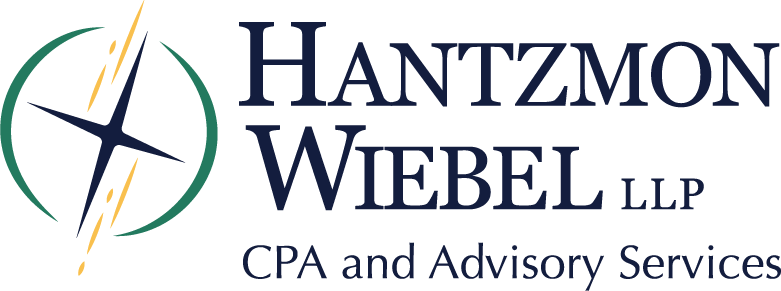The IRS recently issued guidance related to coronavirus-related distributions allowed under the Coronavirus Aid, Relief and Economic Security (CARES) Act. Notice 2020-50 and Notice 2020-51 apply to qualified individuals, employers and eligible retirement plans. The guidance is lengthy and complex and includes an expansion of the definition of who is a qualified individual that can take a coronavirus-related distribution.
Basics About the CARES Act Favorable Retirement Plan Distribution Rules
In response to the COVID-19 pandemic, the CARES Act provides for special tax treatment for a “coronavirus-related distribution” from a retirement plan.
Provisions of the CARES Act:
• Provides an exception to the 10% additional tax (and the 25% additional tax for certain distributions from SIMPLE IRAs) for early distributions from qualified retirement plans made to qualified individuals;
• Allows the early distribution to be included in income ratably over three years; and
• Provides that the distribution is treated as though it were paid in a direct rollover to an eligible retirement plan if the distribution is eligible for tax-free rollover treatment and is recontributed to an eligible retirement plan within the three-year period beginning on the day after the date on which the distribution was received.
Who Is a Qualified Individual?
Under the CARES Act, a qualified individual is one:
• Who is diagnosed with COVID-19 by a test approved by the Centers for Disease Control and Prevention (CDC), including a test authorized under the Federal Food, Drug, and Cosmetic Act (FFDCA);
• Whose spouse or dependent is diagnosed with COVID-19 by a test approved by the CDC, including a test authorized under the FFDCA; or
• Who experiences adverse financial consequences as a result of the individual who meets one of the following qualifications:
1. Is quarantined;
2. Is furloughed or laid off;
3. Has work hours reduced due to COVID-19;
4. Is unable to work due to lack of childcare due to COVID-19;
5. Experiences the closing or reduced hours of a business he or she owns or operates due to COVID-19;
6. Has pay or self-employment income reduced due to COVID-19; or
7. Has a job offer rescinded or a start date for a job delayed due to COVID-19.
What’s a “Coronavirus-Related Distribution?”
The CARES Act defines a coronavirus-related distribution as any distribution from an eligible retirement plan made on or after January 1, 2020, and before December 31, 2020, to a qualified individual.
The law limits the amount of aggregate distributions from all eligible retirement plans that can be treated as coronavirus-related distributions to no more than $100,000.
Guidance for Employers
Notice 2020-50 and Notice 2020-51 also provide guidance on how employer-sponsored retirement plans can report coronavirus-related distributions and how taxpayers may report the distributions on their individual federal income tax returns. The guidance in Notice 2020-51 is in the form of questions and answers.
For more information about coronavirus-related distributions in your situation, fill out the form below and our team will get back with you.
Rollover Relief for Required Minimum Distributions (RMDs)
Anyone who already took an RMD in 2020 from certain retirement accounts now has the opportunity to roll those funds back into a retirement account following the CARES Act RMD waiver for 2020.
The IRS announced that the 60-day rollover period for any RMDs already taken this year has been extended to August 31, 2020, to give taxpayers time to take advantage of this opportunity. The tax agency described the change in Notice 2020-51.
The CARES Act enables any taxpayer with an RMD due in 2020 from a defined-contribution retirement plan, including a 401(k) or 403(b) plan, or an IRA, to skip those RMDs this year. This includes anyone who turned age 70½ in 2019 and would have had to take the first RMD by April 1, 2020. This waiver doesn’t apply to defined-benefit plans.
In addition to the rollover opportunity, an IRA owner or beneficiary who has already received a distribution from an IRA of an amount that would have been an RMD in 2020 can repay the distribution to the IRA by August 31, 2020. The notice provides that this repayment isn’t subject to the one rollover per 12-month period limitation and the restriction on rollovers for inherited IRAs.
The guidance provides two sample amendments that employers can adopt to give plan participants and beneficiaries whose RMDs are waived a choice as to whether or not to receive the waived RMD.
Contact Us
© Copyright 2020 Thomson Reuters.
Disclaimer of Liability
Our firm provides the information in this article for general guidance only, and does not constitute the provision of legal advice, tax advice, accounting services, investment advice or professional consulting of any kind. The information provided herein should not be used as a substitute for consultation with professional tax, accounting, legal or other competent advisors. Before making any decision or taking any action, you should consult a professional advisor who has been provided with all pertinent facts relevant to your particular situation. Tax articles in this blog are not intended to be used, and cannot be used by any taxpayer, for the purpose of avoiding accuracy-related penalties that may be imposed on the taxpayer. The information is provided “as is,” with no assurance or guarantee of completeness, accuracy or timeliness of the information, and without warranty of any kind, express or implied, including but not limited to warranties of performance, merchantability and fitness for a particular purpose.
Blog
Nonprofit Insights

